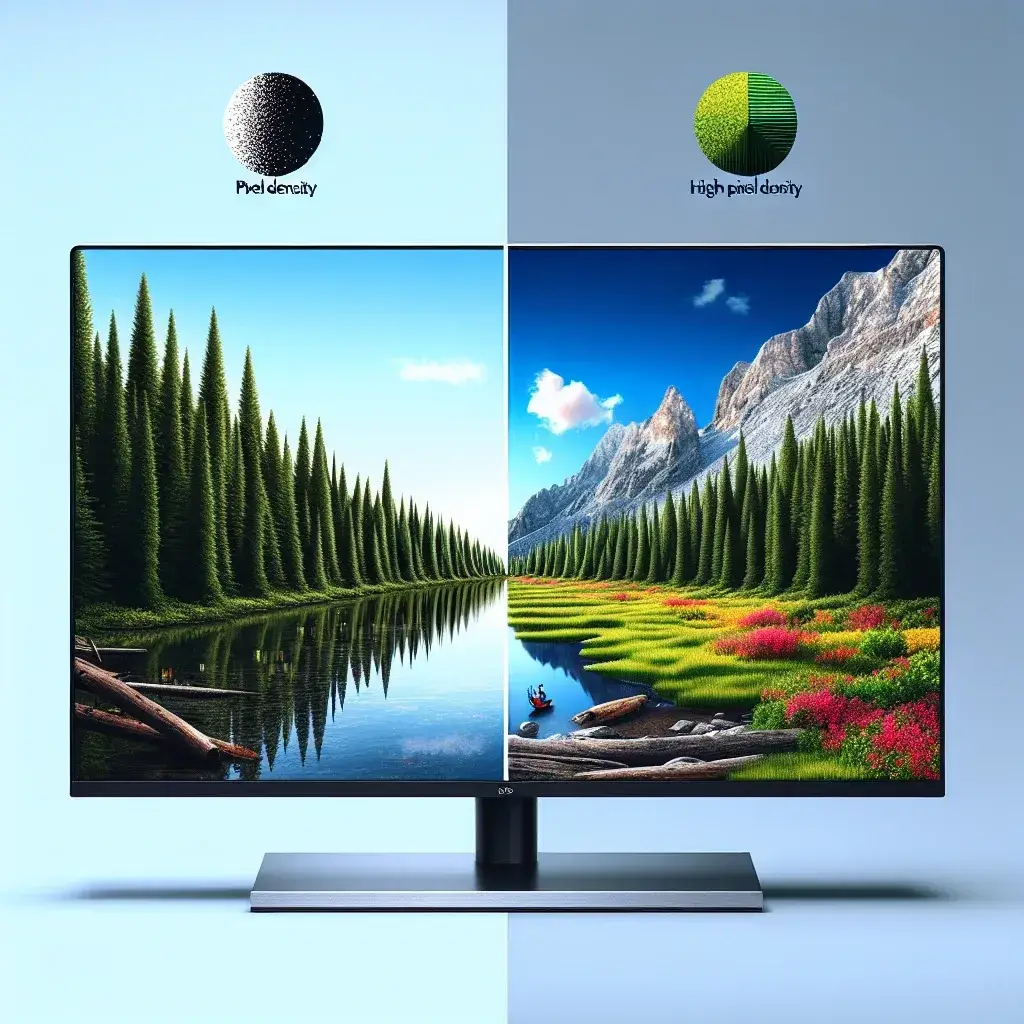How does pixel density affect OLED monitor quality?

OLED monitors have revolutionized the display market with their vibrant colors, deep blacks, and thin form factors. One crucial aspect that significantly influences the quality of these monitors is pixel density. Pixel density determines the sharpness and clarity of the images displayed, impacting the user’s overall experience.
Understanding Pixel Density
Pixel density, measured in pixels per inch (PPI), refers to the number of pixels present per inch on a screen. A higher PPI indicates more pixels in a given area, leading to finer details and sharper images. For OLED monitors, achieving superior pixel density is vital to maximize their inherent advantages, such as contrast and color accuracy.
Pixel Density and Resolution
Resolution refers to the number of pixels displayed on the entire screen, typically described as width x height (e.g., 1920 x 1080). However, resolution alone does not determine display quality—pixel density plays a pivotal role. A 1080p resolution on a 24-inch monitor will have a different PPI compared to the same resolution on a 32-inch monitor.
| Screen Size (inches) | Resolution | PPI |
|---|---|---|
| 24 | 1920 x 1080 | 91 |
| 27 | 1920 x 1080 | 81 |
| 32 | 1920 x 1080 | 69 |
This table illustrates how pixel density decreases as screen size increases for the same resolution, highlighting the need for higher resolutions to maintain image sharpness on larger monitors.
Impacts on Image Quality
Sharpness and Detail
A higher PPI ensures that images and text appear sharper and more detailed. For tasks that require fine detail, such as graphic design or video editing, higher pixel density is crucial to avoid pixelation and ensure precision.
Color Accuracy and Gradients
OLED displays are renowned for their color accuracy. A higher pixel density enhances this by providing smoother color transitions and more precise color representation. Low pixel density can lead to color banding, where gradients appear with noticeable steps.
Viewing Distance
The optimal viewing distance also plays a role. For monitors with lower PPI, sitting further away might mitigate the visible pixels, whereas higher PPI allows for closer viewing without loss of image quality. This is important for professional applications where users interact closely with the screen.
Pixel Density in Gaming and Entertainment
For gamers and entertainment enthusiasts, high pixel density is paramount. It offers a more immersive experience, with cleaner visuals and finer details, enhancing the realism of the content.
- Improved Visual Fidelity: Higher PPI enables games to showcase intricate details, making environments and characters more life-like.
- Reduced Eye Strain: Sharper text and graphics reduce the strain on the eyes during extended use.
- Competitive Advantage: In fast-paced gaming, clear visuals are crucial for spotting enemies and quick reactions.
Balancing Pixel Density and Performance
While higher pixel density offers superior image quality, it also demands more from the hardware driving the display. GPUs must render more pixels, which can impact performance. Thus, it is essential to balance pixel density with the capabilities of the hardware to ensure smooth operation.
Refresh Rates
High-refresh-rate OLED monitors are popular among gamers. Maintaining high refresh rates at higher resolutions requires substantial processing power. Balancing PPI and refresh rates ensures a fluid and responsive experience.
Battery Life in Portable Devices
For portable devices like laptops and tablets, increased pixel density can impact battery life. Higher resolutions require more power to maintain brightness and color accuracy. Manufacturers must optimize the balance between pixel density and power consumption to offer longer battery life.
Future Trends in Pixel Density for OLED Monitors
The industry continues to innovate, aiming for higher pixel densities without compromising performance. Advancements in manufacturing techniques and more powerful GPUs are paving the way for ultra-high PPI screens that deliver unmatched visual experiences.
MicroLED and Quantum Dot Technologies
Emerging technologies like MicroLED and Quantum Dots are expected to enhance pixel density and image quality further. These technologies promise higher efficiency and better color accuracy, complementing the attributes of OLED panels.
8K and Beyond
As 8K resolution becomes mainstream, monitors with extremely high pixel densities will become more prevalent. This shift will demand advancements in both display technology and content creation to fully utilize the capabilities of such high-resolution screens.
Conclusion
Pixel density is a crucial factor affecting OLED monitor quality. It influences sharpness, color accuracy, and overall user experience. As technology advances, achieving higher pixel densities will continue to improve the visual fidelity of OLED displays, making them indispensable for professionals, gamers, and entertainment enthusiasts alike.
